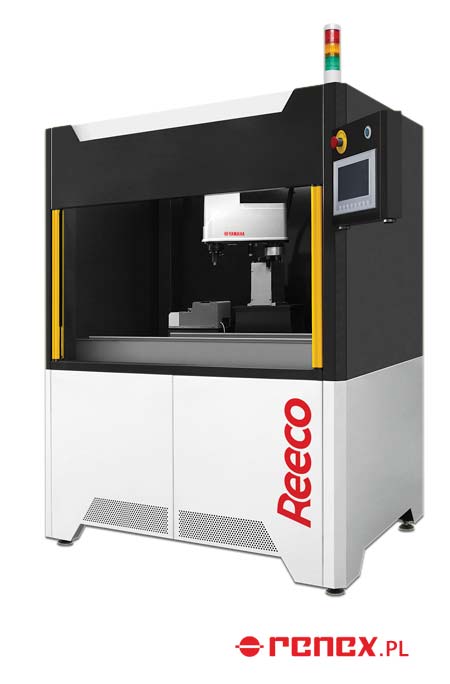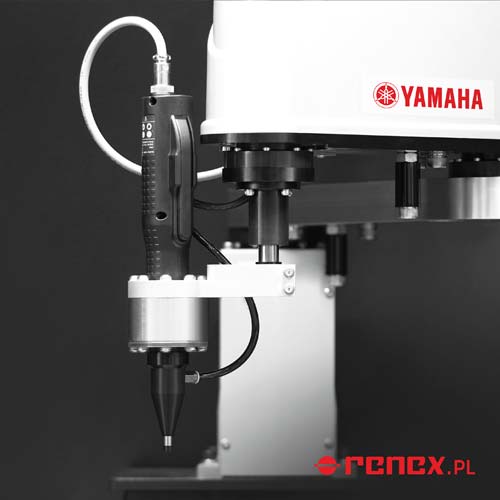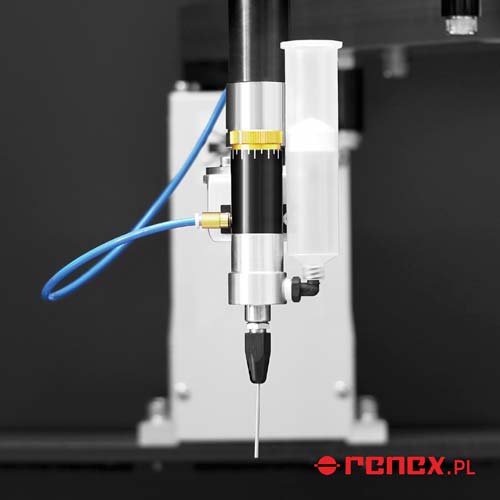 Electronics production is one of the most highly automated industries. Efficiency demands and increasing miniaturisation have long resulted in advanced equipment being available on the market for all stages of its key segment – SMT component assembly. Solder paste printers, pick & place machines, inspection systems and reflow ovens are common technological solutions. However, the market offer of equipment allowing automation of other, often non-standard and non-uniform process segments – such as mounting the PCBs in housings – remained undeveloped until recently.
Electronics production is one of the most highly automated industries. Efficiency demands and increasing miniaturisation have long resulted in advanced equipment being available on the market for all stages of its key segment – SMT component assembly. Solder paste printers, pick & place machines, inspection systems and reflow ovens are common technological solutions. However, the market offer of equipment allowing automation of other, often non-standard and non-uniform process segments – such as mounting the PCBs in housings – remained undeveloped until recently.
However, with advances in robotics, automation of these operations is now becoming more readily available and more widespread. This allows bottlenecks to be eliminated from production lines, thereby increasing process efficiency and repeatability. In this review, we will take a look at selected solutions that allow automation of operations other than those performed by SMT lines – REECO robots.
REECO robots
REECO robots are solutions developed by the RENEX Group – one of the largest and longest operating Polish companies in the electronics industry. The robots have been designed as ready-to-use solutions that can be introduced into existing production lines. The devices have been equipped with edge conveyors and SMEMA communication, thanks to which several robots may form co-operating groups or co-operate with other devices. Of course, the devices can also work offline.
REECO robots are currently available in three basic models: Soldering Robot, Screw Assembly Robot and Dispensing Robot. Other variants are available on request.
Soldering robot
 The REECO soldering robot allows you to automate the assembly of through-hole components on PCB. The device is an alternative to the soldering wave. In contrast to it, the robot has a low power consumption and does not require the use of carriers made of expensive materials. The process also does not require cleaning of the flux used in the soldering process. This makes small and medium volume production profitable with its use.
The REECO soldering robot allows you to automate the assembly of through-hole components on PCB. The device is an alternative to the soldering wave. In contrast to it, the robot has a low power consumption and does not require the use of carriers made of expensive materials. The process also does not require cleaning of the flux used in the soldering process. This makes small and medium volume production profitable with its use.
The design is based on a soldering head with a solder feeder mounted on a YAMAHA SCARA robot. This makes it possible to create precise soldering connections according to the programmed pattern. The applied PLC controls all the auxiliary equipment, such as conveyor, soldering iron, solder wire feeder or tip cleaning station. The system is also equipped with an HMI operator panel which allows fast and simple control of the conveyor and soldering iron temperature or program change.
The REECO Screw Assembly robot allows the automation of production steps that require the assembly of components with screws and bolts. In the field of electronics production, these processes are mostly used in the assembly of enclosure segments and finished products. The robot is an alternative to the human labour that is still common in this phase of production. Very often, employees manually screw in a few to several dozen screws using an electric screwdriver. Automation of this process with robots allows for significant time savings and increased productivity. The element on which the work is performed (product, enclosure) is introduced into the work field on the conveyor. The robot, executing the programme, takes the appropriate screws from the feeder and screws them into the holes with the selected pressing force, thanks to which full repeatability and precision is maintained, while the risk of human error is minimised.
The REECO dispensing robot allows for automatic and precise distribution of substances of different densities. In the field of electronics production, adhesives and gaskets are most frequently applied, but there are also applications where paints, greases and other substances of similar consistencies have to be used. A special form of dispensing – conformal coating – should also be mentioned. It involves spreading a protective substance, usually based on silicone, on the surface of a PCB. Practice shows that these processes, depending on the substance to be applied, are still often performed manually or with semi-automatic dispensers. An alternative solution is to use a REECO robot. The object to be coated is brought into the working area, where a nozzle-equipped application head distributes the substance according to a pre-programmed pattern and in precisely measured quantities. This makes the process independent of the operator’s manual skills and allows achieving accuracy and repeatability which the human hand is not capable of. All of this minimises the costs and process problems associated with applying too little or too much substance – particularly leakage and the resulting contamination. As a result, robotisation speeds up the process, minimises wear and tear on the applied substances themselves and reassures the user that products are manufactured with the highest possible precision.
Summary
Advances in robotisation have made solutions available to automate elements of the electronics manufacturing process outside of surface mount assembly. Robotisation makes it possible to increase precision, reduce losses due to human error as well as to become independent from the availability of workers. The consequence is an increase in production efficiency. If you are interested, we encourage you to familiarise yourself with the RENEX Group’s offer on its website and to visit the RENEX TECHNOLOGY AND TRAINING CENTRE, where the equipment can be seen and tested in simulated production conditions on your own components.
 Contact:
Contact:
Andrei Bratanov
Str. Văliug, nr. 32, Sector 1, 13986 București
T: +40 799 774 330
E: office@renex.ro
Renex
https://www.renex.pl/ro/




